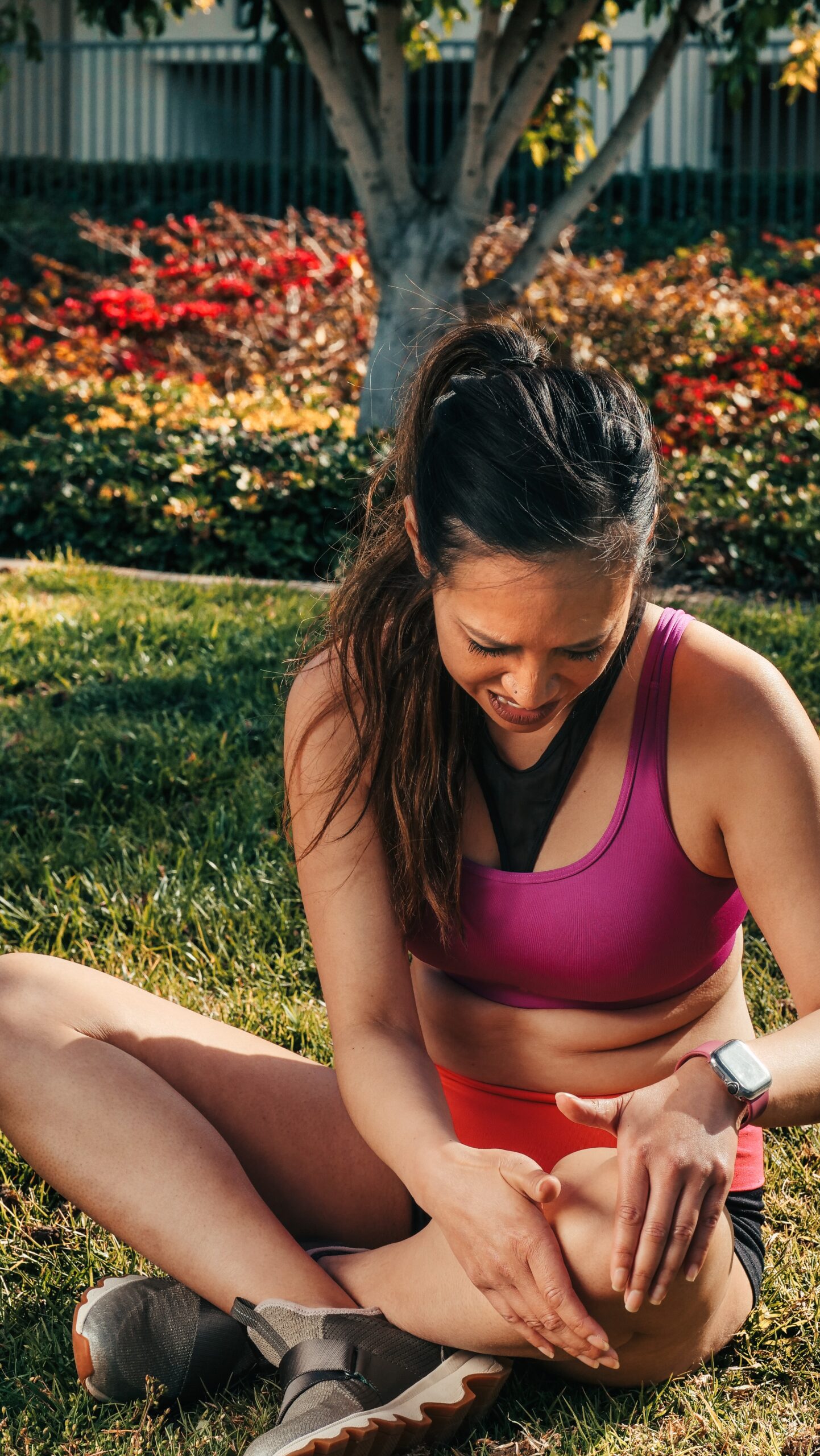Injury Description:
• Knee pain is one of the most common symptoms experienced by sports participants. Studies have shown that the patellofemoral pain syndrome comprises up to 50% of overuse injuries. This syndrome is caused by an irritation of the under surface of the patella (knee cap) which in its normal state, is smooth. The irritation can lead to a roughening of the patella under surface, a condition called chondromalacia.
• The patella is a moving part. It glides up and down a groove in the femur (thigh bone). The pain is caused by pressure between the patella and the groove in the femur. As you bend your knee, you gradually increase the pressure between the patella and the femur.
• The irritation and roughening of the patella causes an inflammation which causes the pain. Patellofemoral pain syndrome and chondromalacia are not arthritis. Children and adolescents almost always grow out of this problem
Predisposing Factors:
1. When the patella does not track symmetrically in the femoral groove, there is an imbalance resulting in wear and tear. This condition can be identified on x-rays.
2. Overuse – especially downhill running
3. wide hips
4. knock knees
5. tibial torsion (rotation of the lower leg)
6. flat (over-pronated) feet
7. weak inner thigh muscles
8. previous injury to the knee
Treatment:
Treatment is based on two principles:
1. Reducing inflammation
2. Improving the dynamics of the patella-femoral relationship
• Rest: when the knee is painful and swollen, you must rest it. Pain is your guide. You are aggravating the condition if you continue activities while experiencing pain. Mild discomfort or ache is not a problem but definite pain is cause for concern
• Ice: Apply an ice pack (frozen peas) to your knee for 15-20 minutes twice daily and after any sporting activities. This reduces inflammation and pain. Remember, you are trying to cool the area underneath your kneecap so be sure to ice until your skin feels numb. Use a papertowel or thin towel against your skin to protect your skin.
• Exercise: exercises can be used to stretch and strengthen the thigh muscles. These muscles control the patella in the groove. When thigh muscles are strong, the patella will move through the groove with less pressure.
• Shoes / orthotics: the structure of your foot may also alter the patella-femoral relationship. You may be prescribed specific shoes or orthotics to help your problem.
• You may also be prescribed a brace or support. It is designed to help keep the patella in the track or groove.
Sports:
There is very little pressure between the patella and the femur when the leg is straight or only slightly bent. The best activities are ones that limit the knee to a range between 135 degrees (1/4 squat) and 180 degrees (straight).
Good sports: These sports will be easiest on the knee:
• Swimming (flutter kick, knees straight)
• Slow jogging, walking
• Skating
• Cross country skiing
Medium risk sports: These sports can be performed by some, but could cause problems to others:
• Cycling (keep seat high and avoid hills)
• Soccer
• Baseball
• Hockey
• Downhill skiing
• Tennis
Risky sports: These sports are hard on the knees as they include deep knee bends. These sports are most likely to aggravate your condition:
• Volleyball
• Basketball
• Running (sprints, downhill)
• Football
• Racquetball
• Squash
Use your judgement, when your knee hurts, avoid all but the good sports. Total rest may be required. When your knees get better after treatment, you should be able to enjoy all sports.
Exercises:
Exercising will build up the muscles that control your knee cap. D them daily, s they can help improve your condition.
Always stretch slowly without bouncing, until you feel your muscles stretch. You shouldn’t feel pain.
Hamstring Stretch:

Quadriceps Stretch:

Static Quads: Lay on the floor with a towel rolled under your knee. Push your thigh into the floor, raise your heel and bend your foot back towards you and hold 5 seconds. Change legs or do both at the same time. Repeat 15 times.

“T” Exercise: Lay on the floor in the same position as above with a weight on your foot (bag of rice works well). Lock you knee and raise your leg. Turn your toes slightly outward. Draw a “T” with your foot. Repeat with other leg. Do 3 sets of repetition. Increase weight weekly as your strength improves.
Wall Squats: Position yourself against a wall with your heels about 12-18” from the wall. Squeeze the ball tightly between your legs and lower yourself down the wall as though you were sitting in a chair. Stop as soon as you feel any pain or pressure in your knee. The goal is to get all angles to be 90 degrees, as in the picture on the right.


